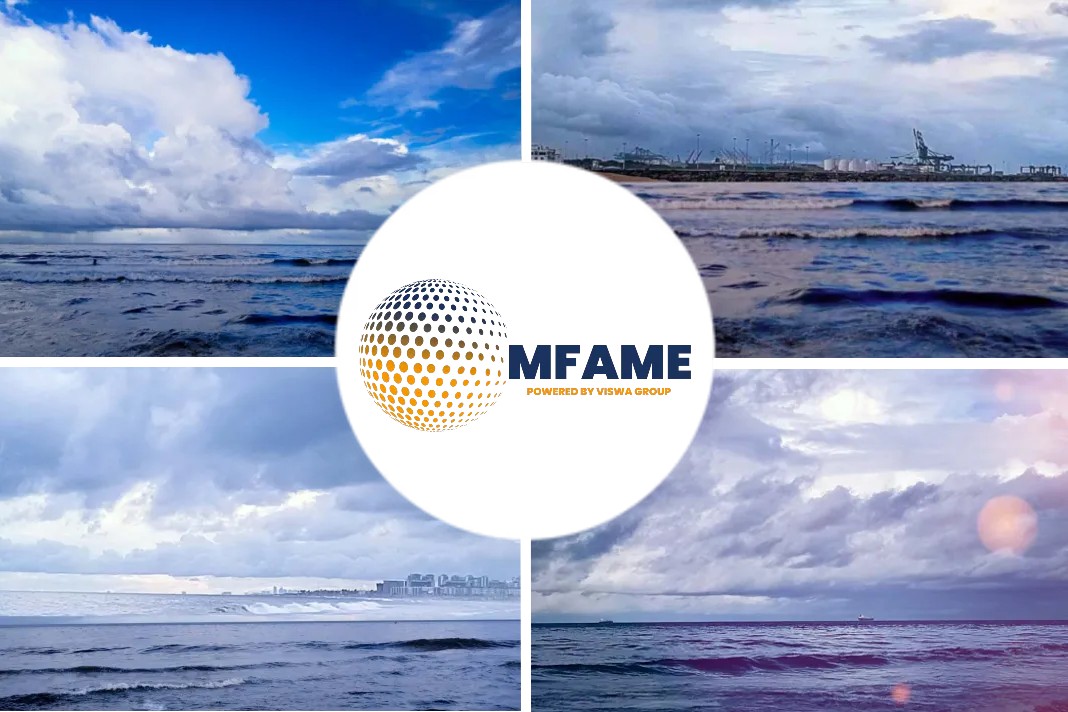
In a well-orchestrated ceremony, Russia raised the flag on the newly completed nuclear icebreaker Ural while launching the completed hull of the sister ship Yakutia into the water nearby. With oil and gas exports shifting from Europe to Asia as a result of sanctions, Russia’s icebreaker fleet will be key to the country’s Arctic hydrocarbon strategy.
Icebreakers
The Baltic Shipyard in St. Petersburg saw the near-simultaneous presentation to the public of two new nuclear icebreakers of the LK-60 class, the most powerful icebreakers in the world.
While Ural, the third vessel in its class, after Arktika and Sibir, saw its flag raised in a ceremony attended virtually by President Putin, nearby, the next vessel of this type, Yakutia was launched into the water.
The two vessels are expected to enter service by the end of 2022 and 2024 respectively.
In total Russia plans to build seven vessels of this type with five either completed or under construction.
While in the past some Arctic shipping experts suggested that a fleet of massively capable icebreakers may be over-dimensioned as sea ice recedes and may no longer be needed in the future, in light of western sanctions against Russian hydrocarbon products, the renewal of Russia’s nuclear icebreaker has become of critical importance.
In fact, Ural will primarily be tasked with ensuring the flow of oil from the upcoming Rosneft Vostok Oil project.
How many icebreakers is enough?
Last month the Chief Directorate of the NSR warned of a lack of icebreakers to fulfil all of the escort duties in the future.
He further elaborated that “the third nuclear-powered icebreaker, Ural, will start operating in 2022.
It has been practically chartered for Vostok Oil.
“They will immediately go to the regions where they are highly needed.”
“There are four icebreakers under construction in the LK-60 icebreaker class.
Besides, the Prime Minister has ordered to additionally build two new icebreakers of the LK-60 series, We plan to start building those icebreakers from 2023 with the financing from the federal budget,” explains Maxim Kulinko, Deputy Director of Rosatom’s Northern Sea Route Directorate.
Exporting to Asia requires more icebreakers
While some of Russia’s Arctic oil and gas ambitions may have to be curbed as a result of western sanctions, e.g. Novatek’s Arctic LNG 2, other projects are proceeding on pace, including the large-scale Vostok Oil project.
In fact, the first such voyage along the NSR with crude oil going to Asia arrived in the Chinese port of Rizhao last week.
The Ukraine war has also affected the composition of traffic on the route.
While in previous years around one-third of vessels travelling along the NSR were non-Russian, in 2022 only a handful of foreign ships ventured onto the route.
“Canada’s Northwest Passage saw high levels of activity”
Canadian NWP is also busy
Therefore, grand plans to turn the route into a major international transit route with travellers from a variety of nations in Europe and Asia hoping to connect the two continents via an Arctic detour may have been put on hold. The NSR of the future might only function as a Russian-exclusive hydrocarbon export route.
The Northwest Passage in Canada, meanwhile, experienced intense activity throughout its seas. 17 commercial ships that were ice-strengthened made a record number of transits across the route. This includes five transits eastbound by one cruise ship and four freighters, as well as twelve transits westbound by eight cruise ships and four freighters.
All of the cargo ships are owned by the Dutch company Royal Wagenborg.
Routes open up faster than predicted
As sea ice continues to melt both routes stand to become even more navigable in the coming decades.
A recent study in Global Environmental Change concludes that the navigable window along trans-Arctic shipping routes is expanding faster than models originally projected.
The researchers looked at how many days per year different classes of vessels, from open-water vessels with no ice protection to ice-capable ships of the Polar Class 4, could safely navigate both routes.
What the study finds is that the length of the navigation season has doubled and in some cases more than tripled between the 1980s and 2010s, to the point where the NSR is now navigable for PC4 vessels for around 330 days a year.
This rapid opening of the region’s waterways calls for “aggressive actions to develop mandatory rules that promote navigation safety and strengthen environmental protection in the Arctic,” conclude the researchers.
Did you subscribe to our newsletter?
It’s free! Click here to subscribe!
Source: High North News






















